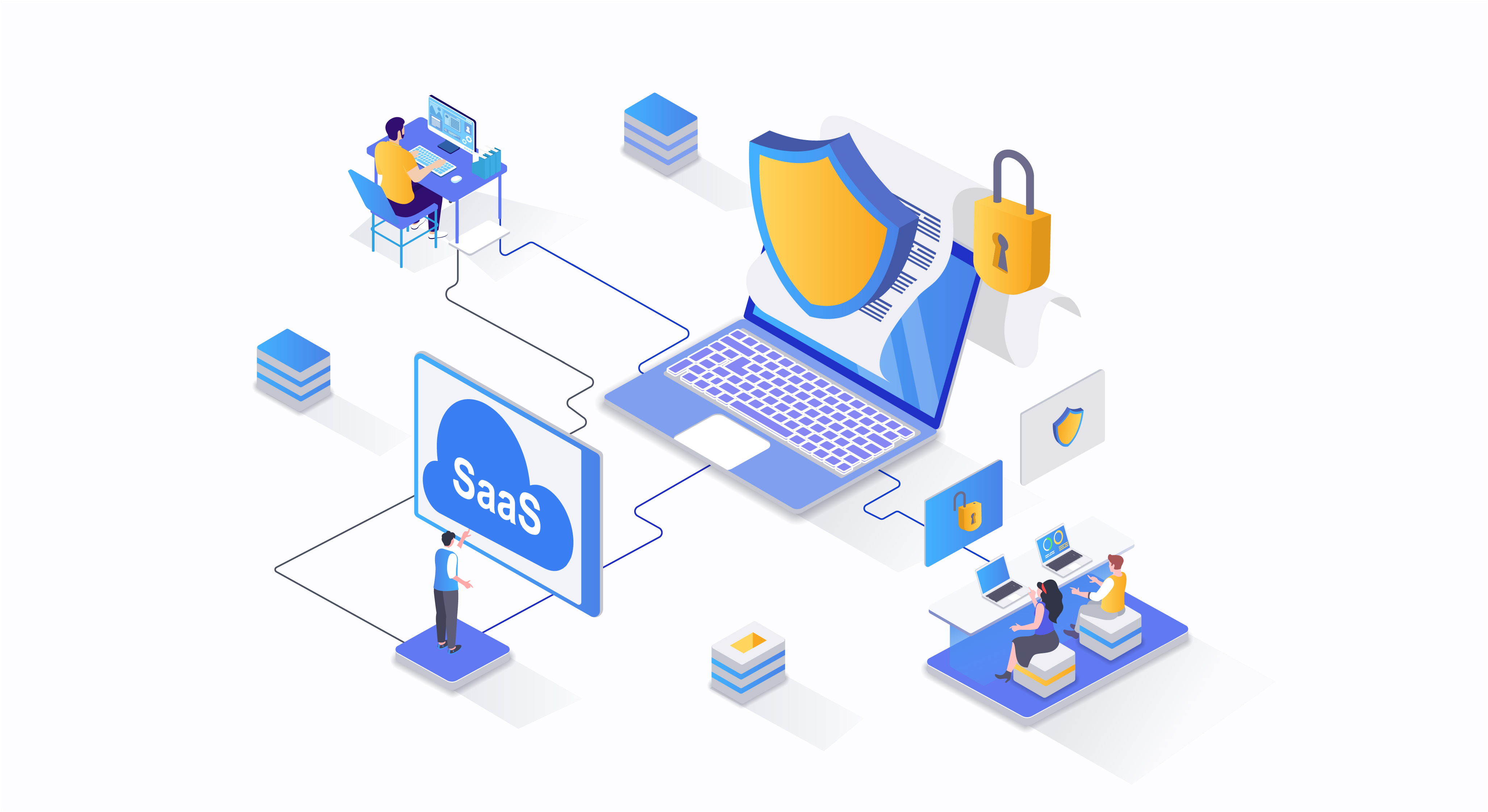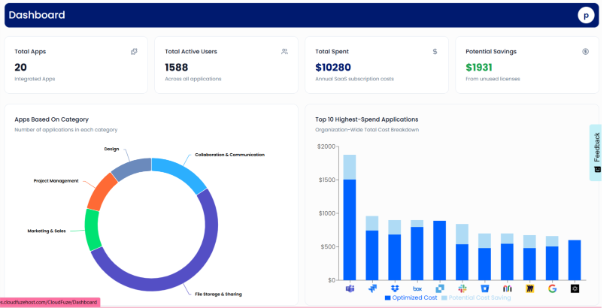Why SaaS Security Demands a Proactive Approach in 2026

From email services to complex enterprise tools, SaaS has transformed how you and your team operate in 2026. However, the more you rely on SaaS, the greater the risk of cloud security breaches and threats if not managed efficiently. Therefore, protecting your SaaS apps is essential for enterprises. At CloudFuze, we offer reliable SaaS management software, CloudFuze Manage, that safeguards your organization’s data and prevents disruptions to your business.
This blog post will help you understand SaaS security, common risks, why a proactive security strategy is necessary, and how CloudFuze Manage eliminates SaaS security risks.
What is SaaS Security Actually?
SaaS security refers to the measures you take to protect cloud-based apps and the data they handle remotely from SaaS security threats and non-authorized access. While it may seem simple, it presents some security challenges, like data leakage, regulatory concerns, and limited control over the hosting infrastructure. The main components of SaaS application security are presented in the image below.
Common Risks and Threats in SaaS Security
The most common SaaS security risks and threats are represented in the table:
| Risk Area | What Happens | Impact |
|---|---|---|
| Privacy Concerns | Hackers target cloud services to steal data. | They expose your personal info, financial records, IP addresses, and trade secrets. |
| Data Leaks | Mainly system failures, accidental deletions, or attacks cause data loss. | You face business workflow disruption and loss of trust. |
| Non-Secured APIs | Many developers use APIs to connect systems, but poor design may expose them. | Attackers gain illegal access, steal data, or disrupt services. |
| Illegitimate Access | Most attackers exploit weak passwords or software flaws. | They access systems without your permission. |
| Insider Threats | Insiders within an organization misuse their access—intentionally or accidentally. | These people leak important business data to their competitors. |
| No Proper Encryption | Teams transmit data without strong encryption. | Usually, hackers exploit this essential information. |
| Regulations Violations | Organizations often ignore industry standards (like GDPR and SOC 2 Type 2). | Those organizations face fines, lawsuits, and even damage their brand value. |
Why Is Being Proactive Essential in SaaS Security?
SaaS security risks are evolving; reacting late can lead to severe consequences. You’ll face the following problems when SaaS security is not adequately prioritized:
Increasing Cyber Threats
- Attackers constantly evolve their tactics to exploit your software.
Reputation Damage & Legal Consequences
- A system intrusion can damage your brand’s reputation, erode customer trust, and lead to negative media coverage.
- Due to this, you may face legal consequences like huge fines, penalties, and lawsuits.
Financial Loss
- Information loss can result in data recovery costs, legal fees, regulatory fines, and increased customer notification expenses.
Customer Trust Issues
- Customers expect their data to be protected, and they’ll continue their business with brands where their information is secure.
A proactive approach to the above concerns helps ensure smooth SaaS operations and quick responses to SaaS data security risks.
5 SaaS Security Best Practices
These are the 5 best practices you can follow to safeguard your SaaS environment:
- You can conduct regular security audits to identify risks in your systems and apps. Additionally, apply the Principle of Least Privilege to grant only necessary access and review permissions regularly.
- Add an extra layer of protection by requiring multi-factor authentication (MFA) for your users. Also, use Single Sign-On (SSO) to let users access all authorized apps with one secure login.
- You must ensure that all data, whether at rest or in transit, is encoded to protect it from unwanted access.
- You can implement Identity and Access Management (IAM) to define roles and control access with centralized IAM policies.
- Educate your team on the latest security practices and probable threats to avoid human error. And regularly assess your SaaS provider to ensure they meet security standards.
Secure Your SaaS Stack with CloudFuze SaaS Management Platform
CloudFuze Manage strengthens your organization’s SaaS security by providing total visibility and insights across all your applications. Here’s how we ease your SaaS stack management:
- Connect all your SaaS apps to our platform with a single click to gain a full view of your entire software system—including Shadow IT.

- Reduce hidden subscription costs by 30% and minimize security risks through our centralized license management.
- Streamline user lifecycle management and automate the onboarding & offboarding processes, which eliminates your exposure to security threats.
- Get timely alerts and access detailed reports on usage, spending, and activity to make insightful decisions.

Wrapping Up
By understanding SaaS security, recognizing all possible risks, and taking preventive measures, you can safeguard your business, avoid costly fines, and maintain your customers’ trust. We at CloudFuze provide a leading SaaS management app that ensures your cloud applications remain secure and resilient.
Contact us today for a free demo!
FAQs
1. Does CloudFuze Manage support data residency and privacy requirements?
Absolutely. CloudFuze is designed with data privacy and residency in mind, offering customizable settings to align with your organization’s legal and regulatory obligations across different regions. For example, GDPR is region-specific, and we, at CloudFuze, customise it for your organization.
2. Can CloudFuze Manage reduce our SaaS spending?
Yes. By centralizing license & subscription management, CloudFuze helps you identify underused/duplicate tools, optimize usage, and cut hidden subscription costs, typically saving organizations 20–30% on their SaaS expenses.
3. Who is responsible for SaaS security: the provider or the customer?
SaaS security follows a shared responsibility model. The provider is typically responsible for securing the underlying infrastructure, application, and platform. At the same time, the customer is responsible for managing user access, configuring settings, and protecting their data within the application.


Leave A Comment